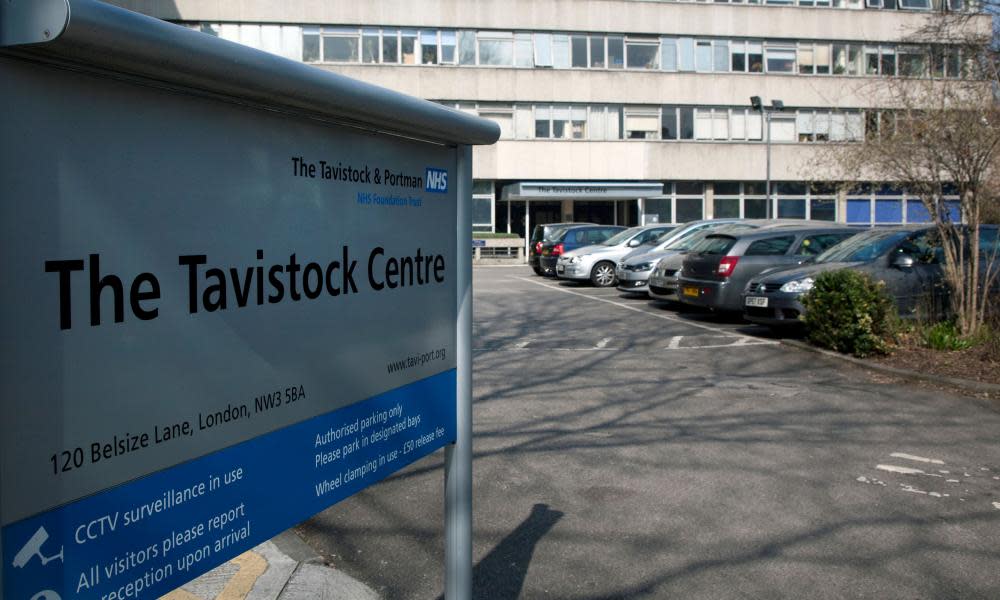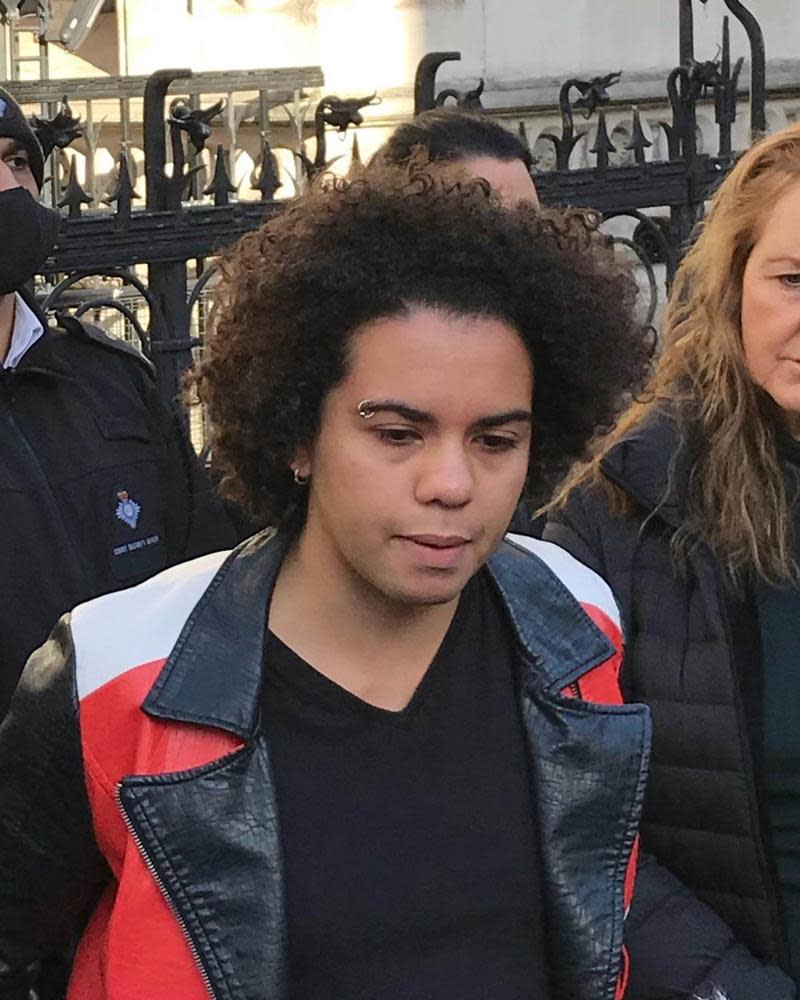Puberty blockers ruling: curbing trans rights or a victory for common sense?

A landmark high court ruling has focused a spotlight on the work of the Gender Identity Development Service for Children and Adolescents (GIDS) at the Tavistock and Portman NHS trust in London.
The highly anticipated judgment on Tuesday concerned legal action taken by 23-year-old Keira Bell against the service – the only one of its kind for England and Wales.
Bell, a former patient, argued she had been too young to consent to the medical treatment overseen by the GIDS that began her female-to-male transition as a teenager.
In a 36-page ruling, the court concluded that children under the age of 16 considering gender reassignment are unlikely to be mature enough to give informed consent to be prescribed puberty-blocking drugs, in effect curtailing medical intervention for under-16s with gender dysphoria.
“There will be enormous difficulties in a child under 16 understanding and weighing up this information and deciding whether to consent to the use of puberty-blocking medication,” the ruling said.
“It is highly unlikely that a child aged 13 or under would be competent to give consent to the administration of puberty blockers. It is doubtful that a child aged 14 or 15 could understand and weigh the long-term risks and consequences of the administration of puberty blockers.”

The decision was welcomed by some as a victory for common sense and safeguarding, and condemned by others as having a chilling effect on the rights of young trans people.
NHS England said that any future medical intervention for under-16s would only be permitted “where a court specifically authorises it”.
The GIDS has faced major scrutiny in recent years, with some former staff and campaigners raising concerns about the “overdiagnosing” of gender dysphoria, the consequences of early medical interventions and the significant increase in referrals of girls questioning their gender identity.
In a series of interview with the GIDS and the Sandyford clinic in Glasgow, the only provider of children and young people’s gender services in Scotland, clinicians have given the Guardian an insight into the treatment pathways, while former staff have shared their own experiences.
The high court judgment noted particular concerns about the use of puberty blockers, which it said could be “properly described as experimental treatment” with “limited evidence of the efficacy or long-term effects”.
Between 4 March 2019 and 1 March 2020, the GIDS referred 171 young people to endocrinology, the initial step before any medical intervention. Of these, 60 were males and 111 were females, their average age was over 15 years and they had on average 10 appointments before this happened.
The GIDS stresses that its entire process is geared to giving young people time for reflection. It says that while some young people will arrive with a specific medical intervention in mind, others will be far more uncertain, benefiting from exploratory sessions, conducted with and without parents.
A care plan is then produced, which for the majority will involve further assessment, perhaps with a request to local services or the school for help. Before the high court judgment, a minority who had begun puberty were recommended hormone blockers, which arrest puberty, often a source of great distress for transgender teenagers.
A separate assessment and consent process was required before any patient moved on to cross-sex hormones, which aim to more closely align secondary sexual characteristics with gender identity, and which were available at around 16 years of age and after a year on blockers. The GIDS does not offer surgery.
Both the GIDS and the Sandyford clinic have seen an increase in referrals of teenage girls over the past decade – a trend reflected across Europe and globally.
Specialists at the GIDS say the rise should be kept in perspective – only one in 10,000 young people are referred to the highly specialised service – and that an over-representation of girls could equally be an under-representation of boys, for whom gender non-conformity tends to be more aggressively policed by peers.
For some girls – who enter puberty earlier and are more sexualised by society and more aware of pressure to have “the perfect body” – the service helps them explore ways of becoming more accepting of their changing bodies.
Only a small proportion of those seen at the GIDS access medical treatment while in the service.
Related: Elliot Page: star of Juno and X-Men announces he is transgender
But critics believe that this amounts to the medicalisation of what is essentially a crisis at the onset of female puberty.
Those critics believe there is evidence that vulnerable young people – many of whom are gay and have homophobic parents or are bullied at school, who have autism or have suffered childhood abuse – are being convinced that changing sex will solve their problems, and that professionals are scared of censure if they challenge this.
The high court itself was critical of what it characterised as the Tavistock’s “surprising” lack of investigation into the rise in referrals of girls and of those with autistic spectrum disorder.
Sources at the Sandyford insist they are not seeing an over-representation of lesbian and gay young people, nor a large proportion of girls who have experienced sexual abuse or of people with homophobic parents trying to “correct” their child’s sexuality.
They say there is an over-representation of young people on the autistic spectrum but caution that there are already high rates of sexuality concerns within that population, caused by highly rigid thinking in terms of self-definition.
There are individual stories of distressed girls who are trying to escape their abuse by identifying as boys, or parents who push their children down the trans route because of anxiety or misunderstanding, but these are the exception.
One clinician suggests that a referral to the Sandyford often allows very confused young people, and anxious parents, the chance to consider what is really troubling them with a variety of professionals.
Those professionals can often “inject a sense of reality” into theories and ideas patients have read about online, and which appear to them to be a quick fix for their problems.
One former consultant psychiatrist and psychotherapist, who worked with the Tavistock’s adult service and with the GIDS, raised concerns that the “very affirmative” approach there risked medicalising behaviour that might otherwise be understood as a young person’s normal need to separate from their parents and express their individuality, perhaps through membership of a subculture.
He reported that, in his current private work with older teenagers and young adults displaying similar concerns, it was possible to help them move through their gender conflict via exploratory therapy which was neither “affirmative” nor attempting to be “corrective”.
The transgender teenagers whom the Guardian was introduced to by Mermaids – a charity providing support to transgender or non-gender-conforming children, including those undergoing medical interventions – overwhelmingly report frustration with lengthy waitings times for initial appointments (an average of 18 months according to GIDS); some turned to private practitioners in the interim. Last month, the Good Law Project launched legal action against NHS England over these waiting times .
“People who say the process is too speedy just don’t understand. Getting medical intervention is like winning the lottery,” said 18-year-old Dylan, who added that he was “deeply saddened” by the Bell judgment.
“It’s really important that people realise this isn’t a choice. The media talks about children being ‘brainwashed’ or ‘fast-tracked’, or that young people want to be trans because it’s a trend. Yes, there are some kids who are confused about gender or get into labels, but if you experience dysphoria that’s different.”
It’s a view shared by Alex, also 18, who says he is “terrified that this judgment is going to sentence trans teens to years of excruciating puberty, causing unmanageable levels of dysphoria and distress”.
Alex was referred to the GIDS six years ago, and had 18 months of regular sessions there before he was prescribed hormone blockers. While he described this wait as “the worst part” of his treatment so far, he added: “It is a thorough process, and I accept that it has to be. They pick apart what you say but that’s good therapy.”
He began taking testosterone two years ago, and said: “I am mostly at a point where being trans doesn’t matter – I finally feel like the real me, and I feel normal now which is the aim. I’m happy.”
The Tavistock is seeking permission to appeal against Tuesday’s judgment.

 Yahoo News
Yahoo News 
